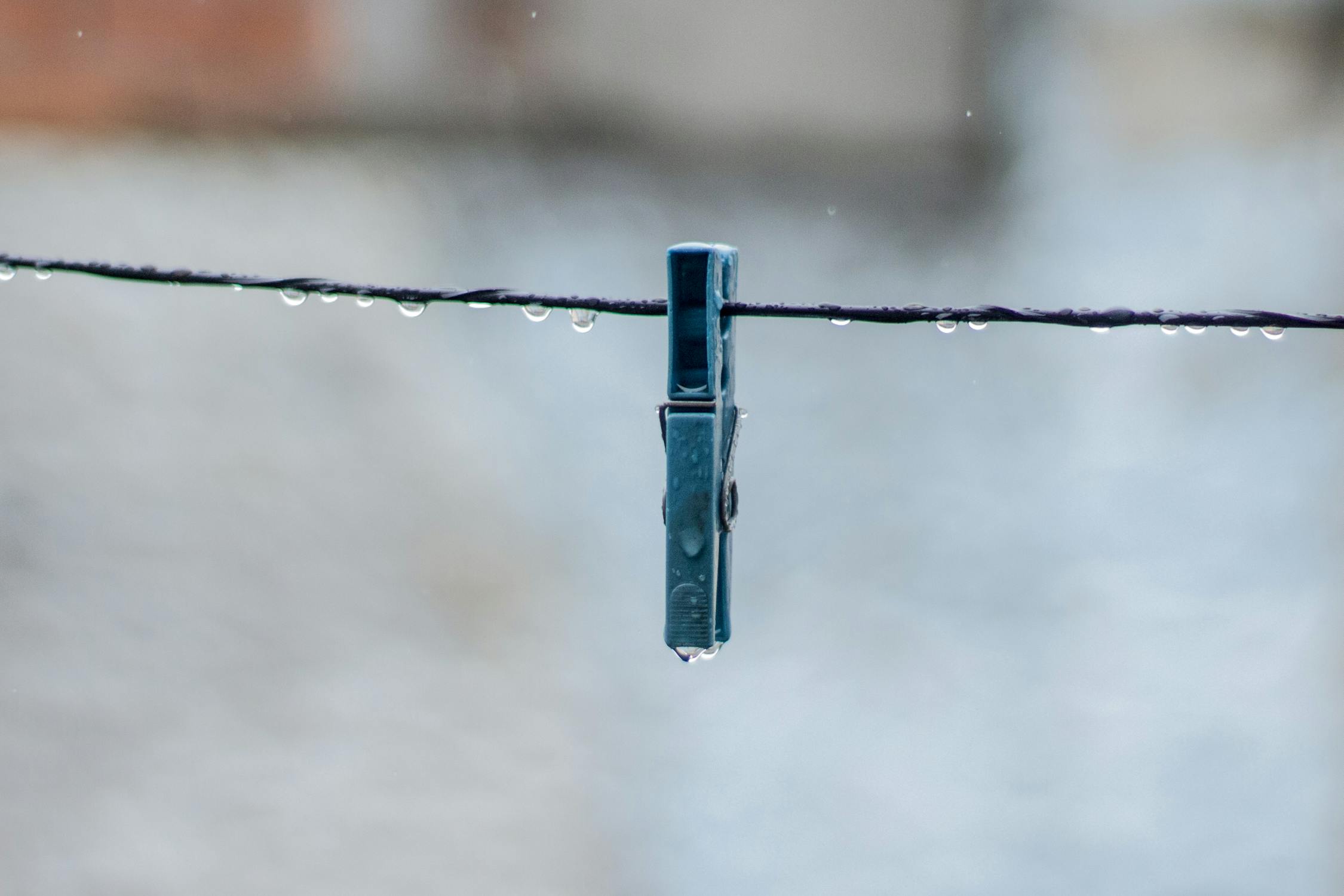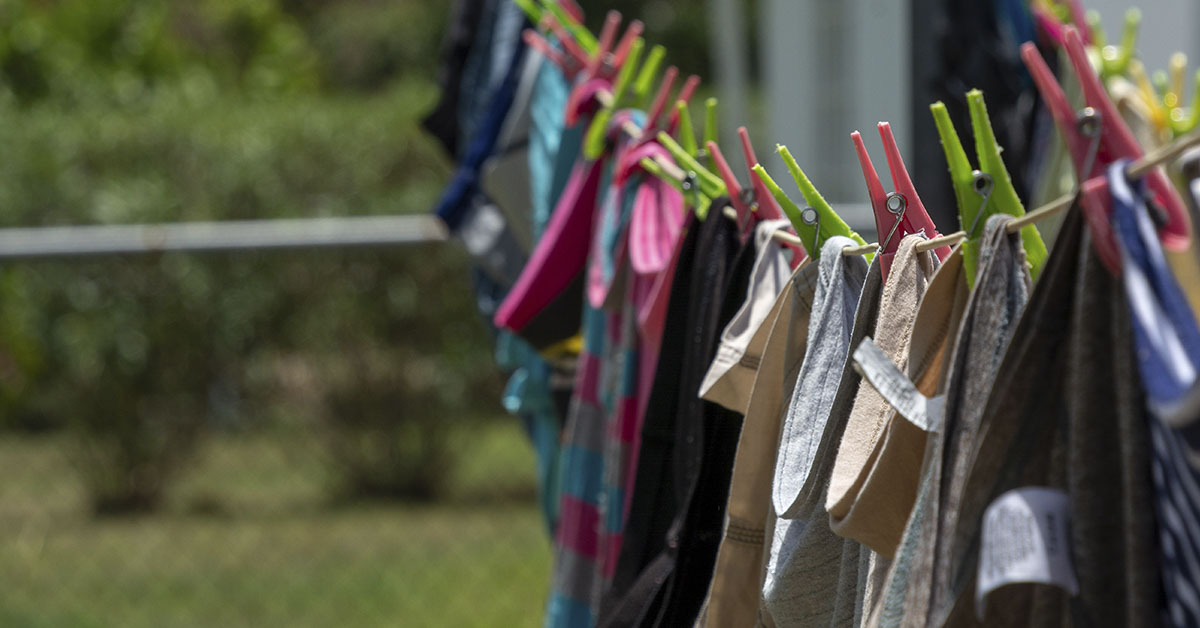Hanging your clothes outside to dry, also known as line drying, has been a popular choice for many years, especially among those who are environmentally conscious or looking to save money on energy bills. The fresh air, natural sunlight, and gentle breeze can refresh your clothes and give them a crisp, clean scent without using a dryer. Not only does it save electricity, but it also reduces wear and tear on your clothing. However, line drying isn’t without its challenges. Weather conditions, allergies, and potential fabric damage are just a few factors to keep in mind. In this article, we’ll take a closer look at the benefits and drawbacks of hanging your clothes outside to dry, so you can make an informed decision that suits your lifestyle.
The Environmental Benefits of Hanging Your Clothes Outside

One of the major reasons people opt for hanging their clothes outside is the environmental benefit. Line drying helps reduce your carbon footprint by eliminating the need for a clothes dryer, which consumes a significant amount of electricity. On average, a clothes dryer uses between 2 to 6 kilowatt-hours (kWh) of electricity per load, depending on the dryer’s efficiency and the load size. This can add up quickly, with the average household running the dryer about 300 times per year, leading to an annual energy consumption of around 600 kWh.
By drying clothes outdoors, you are conserving energy, which in turn reduces greenhouse gas emissions. This simple change can save the average household around $100 to $150 per year on energy bills. It’s a small change that can add up over time, especially if you live in a large household or frequently wash laundry. It’s an easy way to do your part in combating climate change and conserving natural resources.
How Line Drying Saves You Money

Line drying not only reduces electricity costs but can also save you money on other household products and appliance maintenance. Using a clothes dryer often means relying on products like dryer sheets, fabric softeners, and lint traps, which add to your overall spending. By line drying, you can eliminate the need for these products, saving hundreds of dollars annually. Additionally, dryers can experience wear and tear over time, leading to expensive repairs or even the need for a replacement. With line drying, you avoid those maintenance costs altogether. When you combine the savings from lower electricity use, fewer laundry products, and reduced appliance upkeep, the total savings can really add up. The effort of line drying can offer significant financial benefits over time.
The Fresh Scent of Outdoors

There’s something undeniably pleasant about the smell of freshly dried clothes that have been hanging outside. The scent of fresh air and sunlight clinging to your laundry can leave your clothes smelling clean and natural, even without the use of fabric softeners. Sunlight helps to naturally bleach and brighten fabrics, giving them a fresh, crisp scent. Many people find this natural scent more appealing than the artificial fragrances added by fabric softeners and dryer sheets. It’s a simple pleasure that brings an added touch of freshness to your clothes.
Sunlight as a Natural Disinfectant

One of the benefits of drying clothes outside is the natural disinfecting effect of sunlight, particularly due to ultraviolet (UV) rays. UV rays have been proven to have antimicrobial properties, capable of killing or deactivating bacteria, viruses, and fungi. Research conducted by institutions like the World Health Organization (WHO) and the Centers for Disease Control and Prevention (CDC) has shown that UV light can effectively reduce microbial contamination on surfaces, including fabric. For example, a study published in the Journal of Hospital Infection found that UV light could kill 99.9% of bacteria on surfaces.
While line drying in the sun doesn’t replace proper washing, the exposure to UV rays can provide an extra layer of cleanliness, particularly for items like towels, bedding, and activewear that tend to retain moisture and harbor bacteria. This natural disinfectant effect is especially beneficial for families with young children or individuals with sensitive skin, as it reduces the need for harsh chemical disinfectants commonly used in laundry detergents. Sunlight can also reduce the risk of skin irritation caused by chemicals in fabric softeners.
For those who want to keep their laundry routine more eco-friendly and chemical-free, line drying offers an added benefit that goes beyond fresh air and scent.
The Potential for Clothes to Fade

While sunlight can be beneficial in many ways, it also has a downside when it comes to line drying. Overexposure to the sun’s UV rays can cause certain fabrics, particularly darker colors, to fade more quickly. Clothes made of cotton and other natural fibers are particularly prone to this issue. To minimize fading, it’s best to dry clothes in the early morning or late afternoon when the sun’s rays are less intense. You can also hang clothes inside-out to protect the colors and keep your wardrobe looking fresh longer.
The Weather Factor: A Major Drawback

One of the biggest challenges of hanging your clothes outside is the weather. Unfortunately, the weather doesn’t always cooperate with your laundry plans. Rain, wind, or even high humidity can make outdoor drying impractical, especially if you live in an area with unpredictable weather. It can be frustrating to hang clothes outside only for a sudden rainstorm to ruin your efforts. This is where having a backup plan, like an indoor drying rack, comes in handy to avoid having to rely entirely on the weather.
Risk of Pollen and Allergens

While outdoor drying offers many benefits, it can also present risks, particularly for individuals who suffer from allergies. Pollen, dust, and other airborne allergens can easily cling to your laundry while it dries outside, potentially aggravating allergy symptoms. This issue is particularly problematic during the spring and summer months, when pollen counts are at their highest. According to the American College of Allergy, Asthma, and Immunology (ACAAI), pollen is one of the most common allergens that can trigger reactions such as sneezing, itchy eyes, and runny noses. Additionally, other environmental factors like pollution and mold spores can settle on clothes drying outdoors, further irritating sensitive individuals. If you’re highly sensitive to allergens, you may want to consider indoor drying or use a covered outdoor drying area to minimize exposure to these irritants.
Read More: Ultimate Guide to Laundry: How Often You Should Wash Everything
The Impact on Fabric Durability

Line drying can be gentler on fabrics compared to tumble drying, which can cause wear and tear over time. However, outdoor drying on a clothesline can have some drawbacks for fabric durability. Prolonged exposure to the sun and wind can weaken fibers, particularly if the clothes are left out for too long. This can cause fabrics to become brittle, which may lead to fraying or tearing. To preserve your clothes’ longevity, it’s important not to leave them outside for extended periods of time and to take them down when they are dry.
The Time Commitment

Hanging your clothes outside requires a bit more time and effort compared to simply tossing them into a dryer. You’ll need to organize your clothes on the line, making sure they are spaced properly to ensure adequate airflow. While the process may only take a few minutes, it can be time-consuming, especially if you have a large load of laundry. For busy families or individuals with packed schedules, the time commitment of line drying might feel like an added burden. However, if you need a little more activity in your daily routine, line drying can help to keep you active and mobile.
Potential for Stiffness in Towels and Sheets

While line drying can leave your clothes smelling fresh and feeling soft, certain items like towels and sheets can become stiff when dried outdoors. The natural fibers of towels tend to lose their plushness when exposed to the sun and wind. This can result in towels that feel rough or scratchy rather than soft and absorbent. To combat this, you can remove your towels from the line as soon as they are dry, or use a fabric softener in the wash to keep them feeling soft after drying.
Limited Indoor Space for Drying

If you don’t have access to outdoor space, you might consider drying clothes indoors. However, line drying inside can present its own set of challenges. Indoor drying racks take up space and can be an eyesore in your living areas. Additionally, without the natural airflow from the outdoors, indoor drying can take significantly longer, leading to higher humidity levels inside your home. In some cases, indoor drying can even promote mold and mildew growth if the room isn’t well-ventilated. Finding the right balance between indoor and outdoor drying can be tricky.
The Simplicity and Aesthetic of Line Drying

Despite its challenges, there’s something inherently satisfying about line drying your clothes. It’s a simple, age-old practice that connects you to a time before modern appliances dominated household chores. Line drying encourages mindfulness and offers a moment to slow down, breathe in fresh air, and appreciate the process of cleaning your clothes. For some, it’s a relaxing, almost meditative experience. A clothesline also adds a charming, nostalgic touch to your outdoor space, with freshly washed laundry swaying in the breeze. It evokes a sense of homeliness and can enhance the rustic, vintage aesthetic of your yard or garden. However, this look isn’t for everyone. If you’re particular about your yard’s appearance, the sight of drying laundry might detract from the overall aesthetic, making it a personal decision based on style preferences.
Weighing the Pros and Cons of Hanging Your Clothes Outside

In conclusion, hanging your clothes outside has both benefits and drawbacks. The environmental and financial advantages are clear, and the fresh air and sunlight can enhance your laundry routine. However, there are factors like weather, allergens, and the potential for fabric damage to consider. Ultimately, whether or not line drying is the right choice depends on your priorities, lifestyle, and the time you’re willing to commit to this task. If you value sustainability and a fresh scent in your clothes, it’s worth incorporating into your routine. Just be sure to weigh the pros and cons to make the best decision for your household.
Read More: 7 Unexpected Ways to Use OxiClean Outside the Laundry Room

